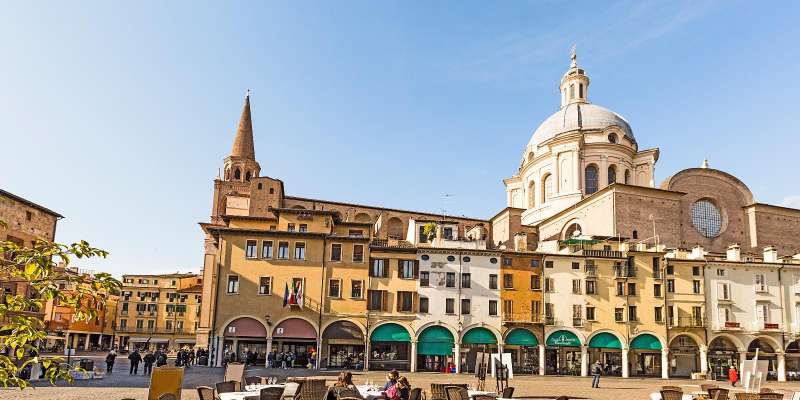- Home
- Useful Tips
- Understanding Mantua's urban layout
Navigating Mantua's UNESCO-listed historic center frustrates many visitors. With three artificial lakes creating natural barriers and a labyrinth of medieval streets designed for defense, 68% of first-time travelers waste over an hour circling the same piazzas according to recent tourism surveys. The stress of missing timed entry slots at Palazzo Ducale or Sant'Andrea Basilica compounds when you're lost in winding alleys, watching precious sightseeing minutes evaporate. Unlike grid-planned cities, Mantua's organic growth pattern demands local spatial awareness - something maps apps consistently fail to capture. This creates unnecessary fatigue before you even confront the city's cultural riches, turning what should be awe-inspiring Renaissance encounters into stressful orienteering challenges.


Why Mantua's layout confuses visitors (and how to reset your bearings)
Mantua's defensive geography actively works against modern navigation instincts. The Mincio River's medieval diversion created lakes that now form moat-like barriers, segmenting the city into distinct zones that aren't intuitively connected. What appears as a short walk on maps often requires unexpected detours across bridges. Compounding this, the historic center's star-shaped street pattern radiates from Piazza Sordello but dissolves into seemingly chaotic alleys designed to disorient invaders. Locals recommend resetting your mental map by using the Torre dell'Orologio as a visual anchor - its 15th-century clocktower remains visible from most vantage points. When disoriented, walk toward any of the three main water features (Lago Superiore, Mezzo, or Inferiore) to reestablish location. This approach proves more reliable than GPS in areas where Renaissance buildings create signal interference.
The local-approved walking route maximizing Mantua's highlights
Seasoned Mantovani follow an unwritten clockwise circuit that logically connects major sites while minimizing backtracking. Begin at Piazza Mantegna where the Basilica di Sant'Andrea provides a spacious orientation point. From here, Via Roma leads directly to Piazza delle Erbe's market stalls - but take the subtle archway shortcut through Corte Campana to shave seven minutes off the standard route. Your next critical decision point comes after Palazzo della Ragione: resist heading straight to Piazza Sordello and instead take Via Accademia toward Teatro Bibiena. This puts you on trajectory for Palazzo Te via a pleasant lakeside promenade most tourists miss. The key is treating the lakes as navigational waypoints rather than obstacles - each major attraction sits within a five-minute walk of water. This route covers eight UNESCO points in under three hours with natural rest breaks at canal-side cafés.
Timing your exploration to avoid Mantua's hidden congestion points
Mantua's narrow passageways create invisible bottlenecks that locals schedule around. The arched corridor connecting Piazza Broletto to Piazza Sordello becomes impassably crowded between 11am-1pm as tour groups converge. Similarly, the pedestrian bridge near Casa del Mantegna sees peak congestion when school groups return from lunch. Smart visitors reverse the standard sightseeing flow - starting with Palazzo Te in the quieter southern sector when crowds cluster at the Ducal Palace. Mid-afternoon, when most day-trippers leave, becomes prime time to explore central piazzas. An insider trick: churches like San Sebastiano offer restful respites with seating and cool interiors when you need to escape both crowds and heat. Their typically central locations make ideal regrouping spots before tackling your next landmark.
Where to stay for seamless Mantua access without the noise
Strategic accommodation choices eliminate half the navigation battle in Mantua. The sweet spot lies in the triangular zone bounded by Via Verdi, Via Pomponazzo, and Via Concezione - close enough for easy walks to major sites but buffered from late-night piazza noise. Converted palazzos here like Hotel Broletto provide authentic character with modern wayfinding aids, often including annotated local maps unavailable to the public. For budget-conscious travelers, the Santa Croce district across Lago di Mezzo offers affordable options with the added benefit of morning ferry connections directly to the historic center. These routes follow the same paths 16th-century nobles used, delivering you near Palazzo Ducale without navigating a single alley. Many properties in this area include bicycle rentals - the ultimate local hack for covering Mantua's spread-out sights while avoiding foot fatigue on cobblestones.



